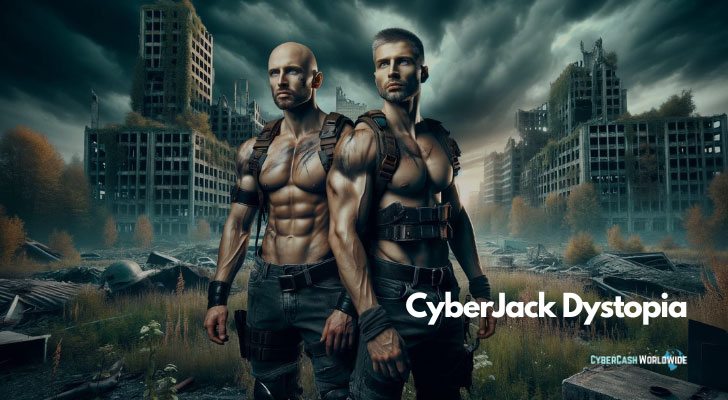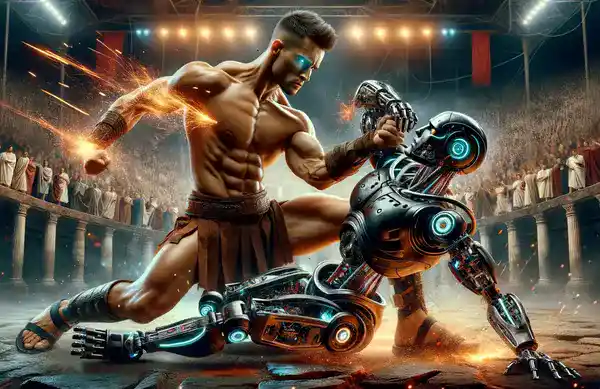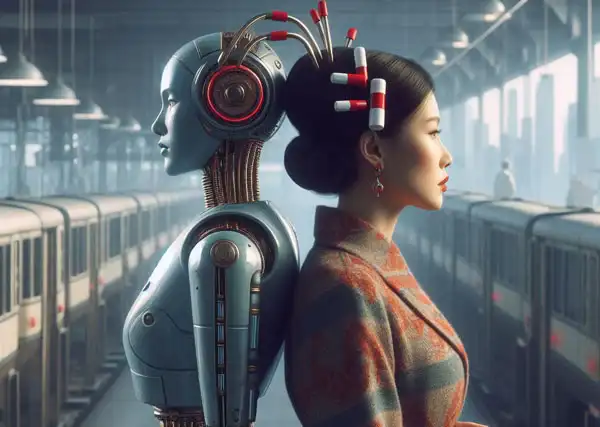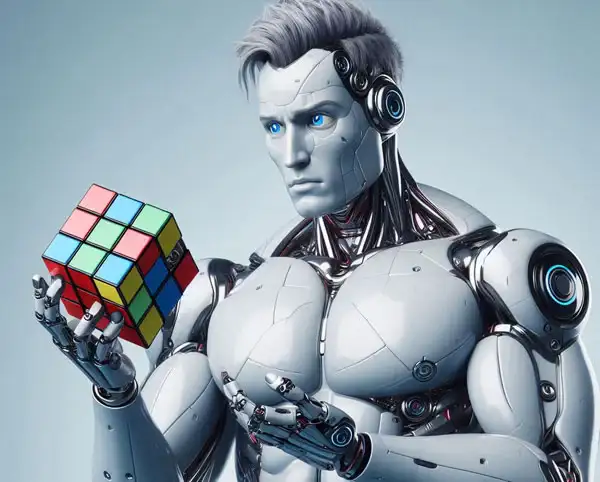I guess there is no need for me to introduce you to CyberJack Dystopia, since we’re all already living in it. But I guess many of us are unaware of it. Your online business marries high-tech advances with a low-life societal breakdown. We already have some places on Earth where skyscrapers glisten above the gloom of societal decay. Really, we are halfway there, aren’t we?
You know you can show how technology can both empower and imprison? The technology can combine noir-inspired aesthetics and cybernetics. Not necessarily creates stuff that we find helpful in our daily lives. It is the 'CyberJack Dystopia.' It's a dystopia where everything is unnecessarily ruled by cyber. You think it is fascinating? So do I.
Did You Know?
- 92% of the population has at least one cybernetic enhancement, varying from basic interface implants to advanced prosthetics.
- 78% of all communication is monitored by unknown entities, pushing citizens to adopt more secure, encrypted methods of interaction.
- Cybercrime rates have spiked by 150% in the past decade, with identity theft and digital espionage leading the offenses.
- 63% of daily life activities, including work, socializing, and shopping, occur within virtual reality platforms to escape the harsh outside world.
- Approximately 40% of the global workforce is engaged in sectors directly related to cybersecurity and digital infrastructure maintenance.
What Defines a Dystopian CyberJack Worldwide?
So a world ruled by cyber implies that the digital and physical realms have become indistinguishably intertwined. Cybernetics, hacking, and virtual reality become essential to survival and power contests in these societies.
This is no longer sci-fi fantasy. Because the human souls are now often shadowed by societal decline. Our notions of progress are challenged, and we are constantly asked to consider what happens when high-tech advancements aren't shared equitably. Asked by who? Media, i.e. ourselves, really.
We hear stories of dissonance of living where technology can offer so much yet delivers so little to so many, right?
Power dynamics are shifted and we are either resisting or complicit in this new order. And the new order is a mirror to reflect on current and future power structures.
1. Mastering Tech Skills: The First Line of Defense
To survive and thrive, you need to understand the very thing that poses a challenge. Learning to code isn't just for building apps or websites; it's about understanding the language of your adversary. Coding skills allow you to build defenses, create your own tools, and even manipulate enemy tech to your advantage. Think of it as learning the art of war in the age of cyber skirmishes.
Unique Encryption for Messages
Privacy is a commodity in short supply, making it paramount to secure communications from prying eyes. Creating unique encryption involves developing a custom cryptographic protocol or applying existing ones in novel ways to encode messages.
This tactic serves as a critical shield against surveillance, ensuring that even if data is intercepted, deciphering the content remains a formidable challenge for unauthorized entities.
This approach demands a solid understanding of cryptographic principles and the ability to implement them in a way that's both secure against potential vulnerabilities and practical for everyday use.
Did You Know?
- 85% of urban areas are deemed unsafe at night due to unregulated drone surveillance and autonomous patrol bots.
- Renewable energy sources power 55% of the dystopia, as traditional power grids are frequently targeted by cyber attacks.
- Community-driven mesh networks provide internet access to 70% of the population, circumventing government and corporate control.
- 47% of citizens have reported experiencing a form of digital harassment or coercion, highlighting the pervasive nature of cyber threats.
- The underground economy, facilitated by cryptocurrency and barter systems, constitutes 35% of all economic activities.
2. Digital Footprint Minimization: Moving in Shadows
In a world oversaturated with data tracking, becoming a ghost is a valuable skill. This involves using privacy-focused browsers, engaging in data obfuscation techniques, and understanding the nuances of digital footprints.
Digital Identifiers and Anonymity Tools
The traceability of online activities is a significant vulnerability. Regularly altering digital identifiers, such as IP addresses, and employing tools like VPNs (Virtual Private Networks) and TOR (The Onion Router), can drastically reduce this risk.
VPNs encrypt internet traffic, masking the user's real IP address and location, while TOR routes traffic through multiple layers of encryption and servers, obscuring the user's identity and activities. This strategy requires diligence in consistently changing identifiers and a commitment to using these tools for all online activities to minimize the digital footprint left behind.
3. Tech Salvaging and Repurposing: One Man’s Trash
In a dystopia, the old adage "one man's trash is another man's treasure" takes on a new meaning. Salvaging discarded tech and repurposing it for your own use not only saves resources but also gives you a tactical advantage.
Repurposing Technology for Surveillance and Delivery
Converting old smartphones into a decentralized network of surveillance cameras offers a low-cost, effective way to monitor surroundings for security purposes. Similarly, using drone parts to build custom devices can provide unique solutions for delivery or further surveillance needs.
This not only recycles technology that might otherwise be wasted but also fosters innovation in creating bespoke solutions tailored to specific needs. The practical implementation of this strategy requires technical skills in electronics and programming, alongside creativity in envisioning new uses for old gadgets.
Did You Know?
- 89% of educational programs include mandatory courses on digital literacy and cybersecurity from an early age.
- Health-related issues due to prolonged exposure to screens and virtual environments affect 68% of the population.
- 30% of buildings are equipped with off-grid capabilities, including water purification and waste recycling systems, to ensure survival during extended network outages.
- 50% of personal vehicles are modified for enhanced security, including signal jamming and anti-tracking systems.
- The average citizen changes their digital identity or alias approximately once every three years to evade tracking and profiling.
4. Cyber Agriculture: Feeding the Resistance
With traditional agriculture possibly compromised, turning to hydroponics and aquaponics powered by sustainable energy sources ensures food security. By using tech to combat tech, you create a system that's both efficient and under your control.
Rooftop Gardens with Tech Integration
Food independence is critical in dystopian scenarios, and rooftop gardens represent a sustainable solution. Incorporating solar-powered sensors to monitor plant health can optimize growth conditions and yields, making the garden more resilient to external supply chain disruptions.
This method combines traditional agriculture with modern technology, leveraging the reliability of solar power and the precision of sensor data to create a self-sufficient food source.
Implementing this system involves knowledge of both gardening and technology, including how to install and maintain solar panels and sensors, and how to interpret the data they provide to make informed decisions about plant care.
5. Guerrilla Marketing in a Digital Battlefield
In a dystopian economy, visibility can mean the difference between thriving and fading into obscurity. Using guerrilla marketing tactics online can help your business stand out. This involves creative, unexpected strategies that grab attention without relying on traditional digital advertising channels, which may be monitored or controlled by adversaries.
Unconventional Message Spreading Tactics
In an environment where traditional marketing channels may be compromised or heavily monitored, creative approaches to spreading your message become crucial.
Projection mapping gives a visually stunning and hard-to-ignore method of advertising or conveying a message. By using buildings or other surfaces as canvases, messages can be displayed in a way that captivates passersby, circumventing conventional digital tracking and censorship.
Similarly, organizing flash gatherings through secure communication channels allows for rapid mobilization of people for protests, marketing stunts, or community events. This method relies on encrypted messaging apps to coordinate the time and location, ensuring participation while maintaining secrecy from surveillance.
These tactics demand a blend of creativity, technical know-how for implementing projection mapping, and operational security in communication.
Did You Know?
- 60% of the population participates in decentralized autonomous organizations (DAOs) for governance, sidestepping traditional political structures.
- Cyberjack incidents, where individuals forcefully hack into others' implants or enhancements, account for 20% of all reported crimes.
- 75% of public spaces are equipped with anti-surveillance foliage and materials designed to block or distort electronic monitoring.
- 33% of the youth engage in hacktivism, using their skills to expose corruption, defend digital freedoms, and combat surveillance.
- Survival skills workshops, teaching everything from basic electronics repair to off-grid living, see an 80% attendance rate among city dwellers seeking independence from the grid.
6. Underground Networking: Building Alliances
Building a network of like-minded survivors is easier said than done. They all talk about socializing and "creating a support system for trade", or information exchange, mutual defense and all. Very few people can actually achieve it - after all, it all depends on our personality.
People set up secure, anonymous forums or using encrypted messaging apps though, to organize meetups, trade goods and services, and share intel on tech threats.
Secure Forums and Encrypted Messaging for Community Building
Establishing secure online spaces is vital for fostering community resilience. Secure forums or encrypted messaging apps provide safe environments for individuals to organize gatherings, trade goods and services, and share intelligence on technological adversaries.
This infrastructure is built on technologies like end-to-end encryption, ensuring that only the communicating parties can read the messages. Implementing these tools requires a familiarity with cybersecurity principles to choose the most secure platforms and practices.
These spaces can also serve as hubs for collaboration, allowing communities to pool resources, skills, and knowledge, reinforcing their ability to withstand and adapt to the challenges posed by their environment.
7. Learning from Nature: Biomimicry as a Tech Alternative
Sometimes, the best way to fight against technology is to look for solutions outside of it. Biomimicry involves imitating models, systems, and elements of nature for the purpose of solving complex human problems. Study the structure of termite mounds to develop cooling systems for buildings that don't rely on traditional, tech-heavy air conditioning units.
Biomimicry for Sustainable Cooling
The design of non-tech-dependent cooling systems inspired by termite mounds represents an innovative approach to architecture that reduces reliance on conventional, energy-intensive air conditioning. Termite mounds are engineered by nature to maintain a constant internal temperature despite external fluctuations.
Architects study these structures to design buildings that naturally regulate temperature through ventilation and air flow, mimicking the mound's ability to circulate air efficiently. This biomimetic strategy offers a sustainable, low-tech solution to cooling, reducing energy consumption and the carbon footprint of buildings.
The practical application of this concept involves interdisciplinary knowledge, combining insights from biology, architecture, and environmental engineering to create buildings that are both comfortable and environmentally friendly.
Making a Living In CyberJack Dystopia
We are required to outsmart technological challenges, leveraging them to your benefit, and finding ways to operate unnoticed. It showcases human creativity and the will to persevere against daunting challenges. With a mix of technical knowledge, discretion, and community support, thriving in this tough environment - it is a statement of resilience.
How You Can Survive and Make a Living in CyberJack Dystopia
1. What is a crucial skill to have for surviving in a dystopia?
- A) Basket weaving
- B) Social media marketing
- C) Coding and cybersecurity
- D) Ancient languages
2. Which method can help minimize your digital footprint?
- A) Posting everything on social media
- B) Using public Wi-Fi without a VPN
- C) Regularly changing digital identifiers and using encryption
- D) Shopping online without secure payment methods
3. How can you repurpose old technology for survival?
- A) Turning old smartphones into doorstops
- B) Using outdated computers as paperweights
- C) Converting old smartphones into a surveillance network
- D) Storing old tech in the basement for nostalgia
4. Which approach is effective for growing food in limited spaces?
- A) Waiting for food deliveries
- B) Planting crops in a virtual reality game
- C) Starting a rooftop garden with hydroponics
- D) Relying solely on canned food
5. What's an unconventional but effective marketing strategy in a dystopia?
- A) Loudly shouting your sales pitch in crowded places
- B) Sending smoke signals with promotional offers
- C) Projection mapping for guerrilla advertising
- D) Advertising exclusively in newspapers
6. How can you establish a secure communication network for your community?
- A) Using a megaphone
- B) Setting up encrypted messaging and forums
- C) Communicating only through postcards
- D) Relying on gossip
7. What's a sustainable energy solution for powering your home or business?
- A) Pedaling a bicycle generator 24/7
- B) Solar panels and wind turbines
- C) Burning all your trash for heat
- D) Using only candles
8. How can technology be repurposed for defense in a dystopian world?
- A) Transforming a toaster into a security camera
- B) Using gaming consoles as surveillance monitors
- C) Repurposing drones for surveillance and delivery
- D) Turning old TVs into barricades
9. What method can help you stay ahead of AI surveillance?
- A) Wearing a tin foil hat
- B) Using smoke signals for communication
- C) Employing stealth technology and encryption
- D) Only talking in riddles
10. Which strategy can provide both food and income in a dystopian environment?
- A) Trading virtual items online
- B) Urban farming and selling the produce
- C) Collecting and selling rainwater
- D) Selling photographs of the dystopian landscape
Answers & Advice
1. Crucial Skill for Surviving in a Dystopia
- A) Basket weaving: While not the most practical survival skill, basket weaving can be useful for creating storage solutions or trade goods.
- B) Social media marketing: In a digital dystopia, understanding online marketing can help promote underground businesses or causes.
- C) Coding and cybersecurity: Essential for protecting privacy, securing communications, and understanding or manipulating tech systems.
- D) Ancient languages: Knowledge of ancient languages might be more of a niche interest, but it could prove useful for decrypting old texts or codes.
2. Minimizing Digital Footprint
- A) Posting everything on social media: This actually increases your digital footprint. Privacy is vital; share less to stay safe.
- B) Using public Wi-Fi without a VPN: Always risky, as it exposes you to surveillance. Use VPNs to encrypt your connection.
- C) Regularly changing digital identifiers and using encryption: A solid strategy for evading tracking and protecting your data.
- D) Shopping online without secure payment methods: Always use secure methods to protect your financial information from theft.
3. Repurposing Old Technology for Survival
- A) Turning old smartphones into doorstops: Creative, but there are more effective ways to repurpose technology.
- B) Using outdated computers as paperweights: Instead, consider salvaging parts for repairs or new projects.
- C) Converting old smartphones into a surveillance network: An excellent way to enhance security with minimal cost.
- D) Storing old tech in the basement for nostalgia: While sentimental, consider repurposing or recycling to better use.
4. Growing Food in Limited Spaces
- A) Waiting for food deliveries: In a dystopia, relying on deliveries might not be reliable. Self-sufficiency is key.
- B) Planting crops in a virtual reality game: Entertaining but won't address real hunger. Focus on tangible solutions.
- C) Starting a rooftop garden with hydroponics: Efficient use of space and resources, providing fresh produce.
- D) Relying solely on canned food: Not sustainable long-term. Growing food ensures a renewable food source.
5. Unconventional Marketing Strategy in a Dystopia
- A) Loudly shouting your sales pitch in crowded places: Might draw unwanted attention. Subtlety can be more effective.
- B) Sending smoke signals with promotional offers: Creative, but limited in reach and can be misunderstood.
- C) Projection mapping for guerrilla advertising: Innovative and can capture attention without traditional digital traces.
- D) Advertising exclusively in newspapers: In a digital age, diversify your methods to reach a broader audience.
6. Establishing Secure Communication
- A) Using a megaphone: Not secure or private. Avoid for sensitive communications.
- B) Setting up encrypted messaging and forums: Ideal for secure, private discussions and organizing without leaving digital evidence.
- C) Communicating only through postcards: Physical mail can be intercepted. Use with caution and for non-sensitive communication.
- D) Relying on gossip: Unreliable and insecure. Information can be easily distorted or intercepted.
7. Sustainable Energy Solution
- A) Pedaling a bicycle generator 24/7: Impractical for consistent energy needs. Good for exercise and small power needs.
- B) Solar panels and wind turbines: Excellent for sustainable energy production, reducing reliance on grid power.
- C) Burning all your trash for heat: Environmental and health hazards outweigh the benefits. Seek cleaner energy sources.
- D) Using only candles: Inefficient for most energy needs. Use LED lights powered by renewable energy for better efficiency.
8. Repurposing Technology for Defense
- A) Transforming a toaster into a security camera: Impractical. Focus on devices more easily adapted to security purposes.
- B) Using gaming consoles as surveillance monitors: Innovative use of existing screens, though limited in application.
- C) Repurposing drones for surveillance and delivery: Highly practical for monitoring and logistics in a dystopian environment.
- D) Turning old TVs into barricades: Creative, but consider repurposing tech in ways that enhance technological capabilities.
9. Staying Ahead of AI Surveillance
- A) Wearing a tin foil hat: More of a joke than a solution. Focus on real cybersecurity measures.
- B) Using smoke signals for communication: Limited use and easily visible. Opt for encrypted digital communication.
- C) Employing stealth technology and encryption: Effective for evading AI surveillance and protecting privacy.
- D) Only talking in riddles: Can be fun but is not a reliable method for secure communication.
10. Providing Food and Income
- A) Trading virtual items online: Can provide income but doesn't address food security.
- B) Urban farming and selling the produce: Offers a direct way to ensure food and generate income.
- C) Collecting and selling rainwater: Useful in water-scarce environments, but regulatory and health considerations apply.
- D) Selling photographs of the dystopian landscape: Can capture interest and provide income, but doesn't solve food needs.
These pieces of advice highlight practical and often creative solutions for surviving and thriving in a dystopian world, emphasizing the importance of innovation, security, and sustainability.
How I "Finally" Make Over $7,000 Monthly Income
"The most valuable thing I've ever done!"








Fantastic article! Really thought-provoking ideas. While I wouldn’t call it a utopia necessarily, you take on a dystopia in a surprisingly positively way. Great outlook. Makes you wonder, what if a “bad” world isn’t so bad after all?
Really? Do you think so? I think it’s a total utter rubbish joke. Thanks for your comment, John.
This post on dystopia way of working from home provided me with all the necessary information to start making money. The detailed description of the steps made choosing a great place. It makes me take actions much easier. I am very grateful for this comprehensive resource.
Thanks for your comment Ayesha. Trashy comment for trashy blog post. You and I are the same, really.